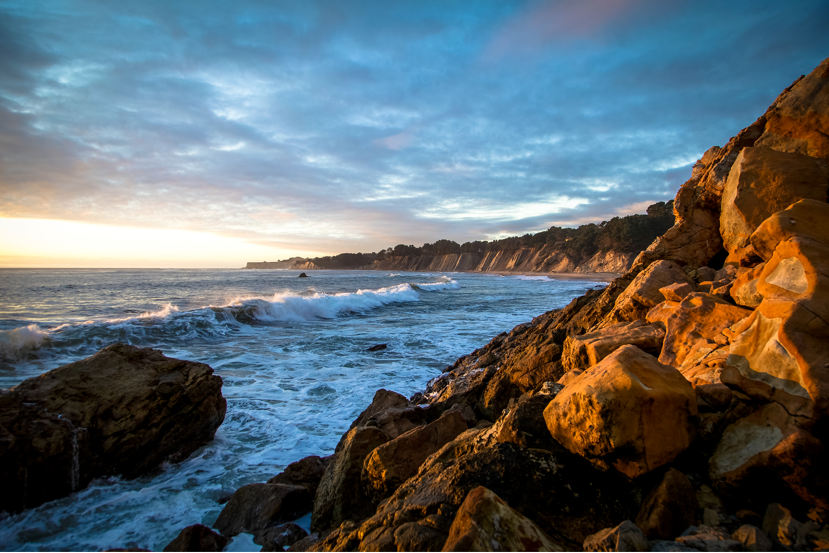
50 Years of Ocean & Coastal Conservation: National Marine Sanctuaries Act

Photo credit: Matt McIntosh
In 1972, the United States enacted a wave of landmark legislation to protect and sustain the ocean, coasts, and Great Lakes, including the amendments to the Clean Water Act, the Marine Mammal Protection Act, the Coastal Zone Management Act, and the Marine Protection, Research and Sanctuaries Act. These Acts fundamentally changed how the United States managed marine, Great Lakes, and coastal environments. This is the final blog in our 50 Years of Ocean and Coastal Conservation blog series- check out the other blogs to learn more about the impact and legacy of each of these four pieces of landmark legislation and celebrate 50 years of conservation of our ocean, coasts, and Great Lakes!
Let’s go back to the beginning. Throughout the 1960s and 70s, a series of events occurred which sparked widespread concern for the state of our environment. Writer and marine biologist Rachel Carson penned a plea for the reduction of pesticide pollution and its detrimental impacts on ecosystems and wildlife in her 1962 book Silent Spring. The scale and fragility of our one blue planet was boldly emphasized when we saw Earth from space for the first time in the iconic 1968 Earthrise photo. Only one year later, dual disasters drew national media attention to this environmental crisis on our coast and in the heartland – the Santa Barbara oil spill and the Cuyahoga River burning. Unfortunately, environmental crises like these were quickly becoming the norm, not the exception, across the country.
1972 was a year of critical change in the United States, that marked a turning point in our nation’s history. Our nation laid the foundation for the modern environmental movement with a wave of landmark legislation – the Clean Water Act, the Marine Mammal Protection Act, the Coastal Zone Management Act, and the National Marine Sanctuaries Act.
Before the National Marine Sanctuaries Act, there were only piecemeal ocean protections and relatively few marine conservation laws in place in the United States, with a patchwork of small and isolated marine protected areas. On October 23, 1972 (exactly a century after the birth of our National Park System on land), the U.S. Congress enacted (and President Nixon signed into law) what was known at the time as the Marine Protection, Research, and Sanctuaries Act. Title III of this Act created the National Marine Sanctuaries Program, initially envisioned as a series of oceanic parks. The National Marine Sanctuaries Act continues to be the only authority to address marine conservation of our national waters from a holistic, ecosystem perspective.
The National Marine Sanctuaries Act authorized Congress and the Secretary of Commerce “to identify and designate as national marine sanctuaries areas of the marine environment which are of special national significance and to manage these areas as the National Marine Sanctuary System.” Special national significance is defined by an area’s conservation, recreational, ecological, historical, scientific, educational, cultural, archeological, or aesthetic qualities. The National Oceanic and Atmospheric Administration’s (NOAA) Office of National Marine Sanctuaries is responsible for management and oversight of our national marine sanctuaries.
Since the National Marine Sanctuaries Act was enacted in 1972, Congress has amended and reauthorized it in 1980, 1984, 1988, 1992, 1996, and most recently in 2000, which required that all sanctuaries be managed as a coherent system. The National Marine Sanctuary Foundation was founded in 2000 by America’s most influential ocean conservation leaders, and is the national non-profit partner for the sanctuary system and a leading voice for U.S. protected waters.
The first national marine sanctuary to be designated under the new National Marine Sanctuaries Act was Monitor National Marine Sanctuary in 1975. Starting with just one square mile off the shores of North Carolina, the National Marine Sanctuary System has expanded to protect over 620,000 square miles of our ocean, along the coasts, and in the Great Lakes. To put that in perspective, the National Marine Sanctuary System in total spans an area the same size as the State of Alaska!
As of October 2022, there have been 15 national marine sanctuaries and 2 marine national monuments designated in the National Marine Sanctuary System across our ocean, coast, and Great Lakes. Our national marine sanctuaries span from the central Pacific across to the North Atlantic, and from the Great Lakes down to the Gulf of Mexico and the Florida Keys. The newest sanctuary to be designated was Wisconsin Shipwreck Coast National Marine Sanctuary in 2021. At the time of this blog’s publication, there are currently three active sanctuary designations in progress- the proposed Chumash Heritage National Marine Sanctuary, Lake Ontario National Marine Sanctuary, and Hudson Canyon National Marine Sanctuary.
For fifty years, our National Marine Sanctuary System has safeguarded species and the places they call home, offered opportunities for research, education, recreation, and conservation, and protected our nation’s maritime and cultural heritage. The National Marine Sanctuaries Act has left an incredible legacy of ocean and coastal conservation and continues to be a shining beacon of hope for continued progress in the face of a changing planet and continued conservation challenges. As we look forward to the next half century, it is time to build on and strengthen the National Marine Sanctuaries Act by launching a national assessment of marine biodiversity and expanding the National Marine Sanctuary System to build a national system of protected waters with permanent protections for biodiversity, increase resilience and mitigate the impacts of climate change, and ensure equitable access to nature for us.
We hope you will join us for the next fifty years as we Save Spectacular.
